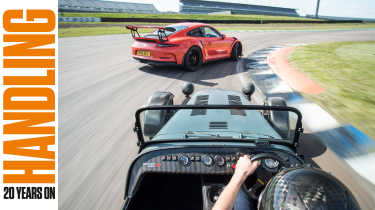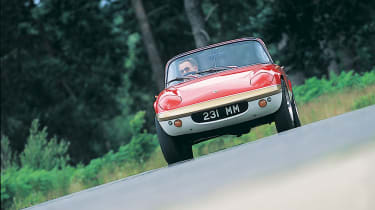Ask the experts: what makes a great handling car? Gavan Kershaw
Gavan Kershaw - Attributes director, Lotus
What’s the most important feature for a driver’s car?
Linear response, and predictable and confidence-inspiring safe handling.
What’s the best-handling car you’ve driven?
Classic Team Lotus invited me to shake down one of its Lotus Type 72 Formula 1 cars. It was perfect – progressive, quick and responsive, with a surprisingly compliant ride.
What’s the best-handling current production car you’ve driven?
Exige Cup 430 – a brilliant road car that is sublime on the track. It always impresses me how we can drive them to a track, spend the day giving demonstration laps, then drive them home on the same tyres and brakes. That’s really where our light weight philosophy pays off.
What car do you wish you had set up?
The original 1960s Lotus Elan. It revolutionised what a sports car should be and set the direction for Lotus ever since.
Can a bad-handling car be fun?
No, not really. You need handling and dynamic linearity where input equals output; what you want the car to do, it does it, when, and at the required speed and with a calm rate of response.
If you had £25,000 to spend, what car would you buy?
Elite Type 75 or an Elise S1.
What car maker do you respect, and why?
Koenigsegg – in a few years, the industry will look back and recognise Christian von Koenigsegg as a hypercar pioneer.
What do you think will be the next big thing in chassis development?
New powertrain and energy technologies mean that we will not be constrained by traditional mechanical hardware such as the engine, gearbox and fuel tank. So weight distribution, centre of gravity, independent-wheel torque vectoring, and aerodynamics will be far better than we could ever have imagined just ten years ago. Secondly, I am looking forward to when true active suspension for the mass market at a cost-effective price comes along. Lotus pioneered true active suspension many years ago, but the production costs were prohibitive at the time, plus we needed a desktop PC to power the system! But now electronics and systems are smaller, quicker and cheaper, so production of true active systems – rather than active damping or active roll control – is realistic.
Has EPAS made good handling easier to achieve?
The exciting part of EPAS is its functionality to speak to other systems – you can have multiple characters for different driving modes, environments and even markets using the same hardware, which is impossible for hydraulic systems.
Is the Nürburgring useful to car set-up?
We have to assume a customer will take their car there too, so the car has to perform there. But the key thing for Lotus is that the Nordschleife is just an over-check.
How do you make an all-electric car engaging for enthusiast drivers?
You have to start with the basics of linear response and predictable and confidence-inspiring safe handling. Torque vectoring gives engineers a very powerful tuning set to reach new limits. A good EV will be brilliant – huge torque, high power and revolutionary design. I can’t wait!






